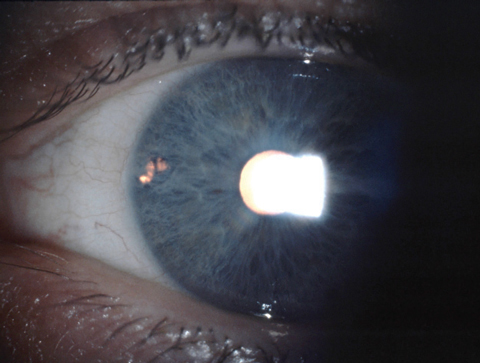 |
| Using data from two large clinical trials, researchers found prophylactic LPI in primary angle closure suspects to be cost-effective, even in younger patients (age 50). Photo: Rick Trevino, OD. Click image to enlarge. |
In primary angle closure suspects (PACS), prophylactic laser peripheral iridotomy (LPI) has been proposed as a preventive measure to reduce the risk of angle closure and subsequent glaucoma development. However, the cost-effectiveness of this intervention has been a subject of debate. A recent study published in the American Journal of Ophthalmology conducted a cost-utility analysis to evaluate the economic impact of prophylactic LPI for PACS. It found the intervention to be cost-effective across a broad spectrum of ages, particularly at ages 50 through 70.
The study used a Markov model and incorporated data from the Zhongshan Angle Closure Prevention (ZAP) trial and the Singapore Asymptomatic Narrow Angles Laser Iridotomy Study (ANA-LIS). The five-year progression rate of PACS to PAC was 7.4% using ANA-LIS data and 3.0% with ZAP trial data, and the rate of conversion to PACG was 0.41% in ANA-LIS and 0.40% in ZAP. All of these values were similar to those reported in previous literature when compared.
The analysis of both studies’ data concluded that prophylactic LPI is generally cost-effective for PACS with cost-saving effects observed at age 50 and cost-effectiveness demonstrated at age 55 and 60 from the societal perspective. At age 80, however, the cost-effectiveness of LPI diminished from the societal perspective. According to the researchers, the variables most likely to influence cost-effectiveness were the probabilities of an eye with PACS and no LPI converting to acute angle closure or PACG.
In the absence of visually significant cataract, the researchers advise that prophylactic LPI should be strongly considered from a public health perspective. “While the literature suggests PAC disease and acute angle closure are relatively rare regardless of prophylactic LPI, this intervention is effective at reducing the relative risk of PACS progression,” they wrote in their paper on the study. They added, “Risks and benefits of any surgical intervention should be reviewed individually with each patient to reach a decision that aligns with patient and provider values.”
Rothman AL, Gibbons A. Cost-utility analysis of prophylactic laser peripheral iridotomy for primary angle closure suspects. Am J Ophthalmol. April 19, 2024. [Epub ahead of print]. |


